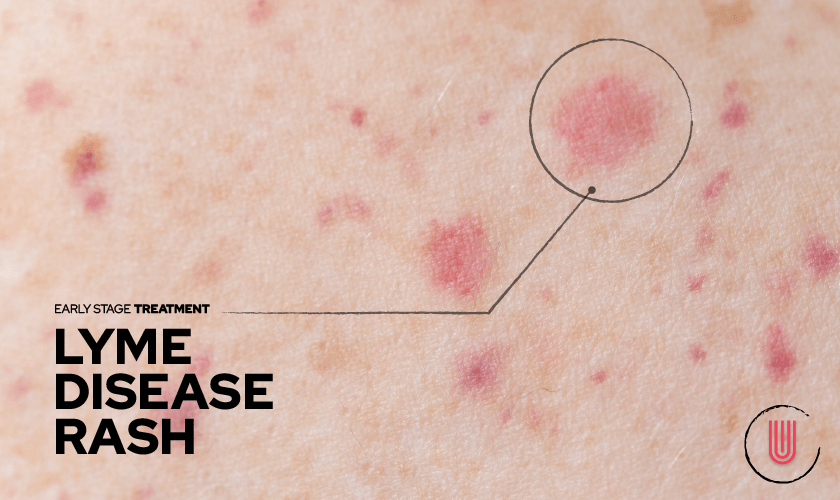
Lyme Disease Rash Early Stage Treatment: A Comprehensive Guide
Lyme disease is a bacterial infection caused by the Borrelia burgdorferi bacterium. It is spread by infected black-legged ticks commonly found in the Northeastern, mid-Atlantic, and upper Midwest regions of the United States. The most common symptom of Lyme disease is a bullseye-shaped rash around the tick bite. However, not all patients exhibit this rash. If left untreated, Lyme disease can cause long-term health problems such as arthritis, facial palsy, and chronic fatigue syndrome. In this blog post, we will discuss Lyme disease rash early-stage treatment, so you can recognize the symptoms and take action promptly.
Symptoms of Lyme Disease Rash
The hallmark of Lyme disease is a red, expanding rash that looks like a bullseye or a target. The rash may appear at the tick bite site, typically within 3-30 days of being bitten. The rash usually starts as a small red spot that gradually expands to form a larger circular or oval-shaped rash. The center of the rash may clear, leaving a bullseye appearance. However, not everyone with Lyme disease gets this rash. Other symptoms of early Lyme disease may include:
- Flu-like symptoms such as fever, chills, fatigue, and body aches.
- Headaches and stiff neck.
- Swollen lymph nodes.
- Joint pain and swelling.
- Dizziness and shortness of breath.
- Nausea and vomiting.
If you experience any of these symptoms, particularly if you’ve recently been in an area where Lyme disease is common, seek medical attention immediately.
Lyme Disease Rash Early Stage Treatment
If you notice a bullseye rash or any of the symptoms mentioned above, see a doctor as soon as possible. The doctor may prescribe antibiotics, such as doxycycline, amoxicillin, or cefuroxime, to kill the bacteria causing the infection. Treatment is most effective when started early in the course of the disease.
The antibiotic treatment duration depends on the disease’s severity and the patient’s overall health. Typically, antibiotics are given orally for 10-21 days. Intravenous antibiotics may be required if the infection is severe or has spread to other body parts. The doctor may also prescribe pain relievers, anti-inflammatory drugs, or antihistamines to manage symptoms such as headaches, joint pain, and itching.
It is important to complete the full course of antibiotics, even if your symptoms improve, to ensure that all bacteria are eradicated. If you stop taking antibiotics too soon, the bacteria may not be eliminated, leading to more severe infections and long-term health problems.
Preventing Lyme Disease Rash
The best way to prevent Lyme disease is to avoid tick bites. Here are some tips to reduce your risk of tick bites:
- Avoid walking in areas with high grass or wooded areas, particularly in the spring and summer when ticks are most active.
- Wear long-sleeved shirts, long pants, and socks, and tuck pants into socks to keep ticks from crawling up your legs.
- Use insect repellent containing DEET, picaridin, or oil of lemon eucalyptus on exposed skin.
- Check your body and clothing for ticks after spending time outdoors. Ticks can attach anywhere on the body but are most commonly found in warm, moist areas such as the armpits, groin, and scalp.
- Shower soon after being outdoors to wash off any unattached ticks.
It is important to note that not all ticks carry Lyme disease bacteria, and not all tick bites result in infection. However, it is still important to take precautions to reduce your risk of tick bites.
Seeking Chronic Lyme Disease Specialist Near Me
In some cases, Lyme disease can become chronic, and patients may experience symptoms long after the initial treatment has ended. This condition is known as post-treatment Lyme disease syndrome (PTLDS). The cause of PTLDS is not fully understood, but it is believed to be related to the body’s immune response to the infection rather than the presence of the bacteria itself.
If you experience symptoms of PTLDS, such as fatigue, joint pain, or difficulty thinking, you should see a doctor who specializes in treating chronic Lyme disease. These specialists are often referred to as Lyme literate doctors (LLMDs) or chronic Lyme disease specialists.
To find a Lyme disease treatment specialist near you, you can search online or contact your local health department or Lyme disease advocacy group for referrals.
The Bottom Line
Lyme disease is a serious illness that can cause long-term health problems if left untreated. If you notice a bullseye rash or experience any symptoms of early Lyme disease, seek medical attention immediately. Early treatment with antibiotics is effective in curing the infection and preventing complications.
To reduce your risk of tick bites, take precautions when spending time outdoors and check your body for ticks regularly. If you experience symptoms of chronic Lyme disease, seek the help of a Lyme disease specialist who can help manage your symptoms and improve your quality of life.
Remember, prevention is the best cure. Take the necessary steps to protect yourself from tick bites and reduce your risk of contracting Lyme disease.
If you are looking for high-quality care and treatment for Lyme disease, Urbane Medical may be able to help. At Urbane Medical, we understand the challenges of a Lyme disease diagnosis and are committed to providing compassionate care and effective treatment options to our patients. We understand that each patient’s experience with Lyme disease is unique, and we take a personalized approach to treatment to ensure the best possible outcome.
If you or someone you know is struggling with Lyme disease, we encourage you to contact Urbane Medical for compassionate care and effective treatment options. We are here to help you through every step of the way.

